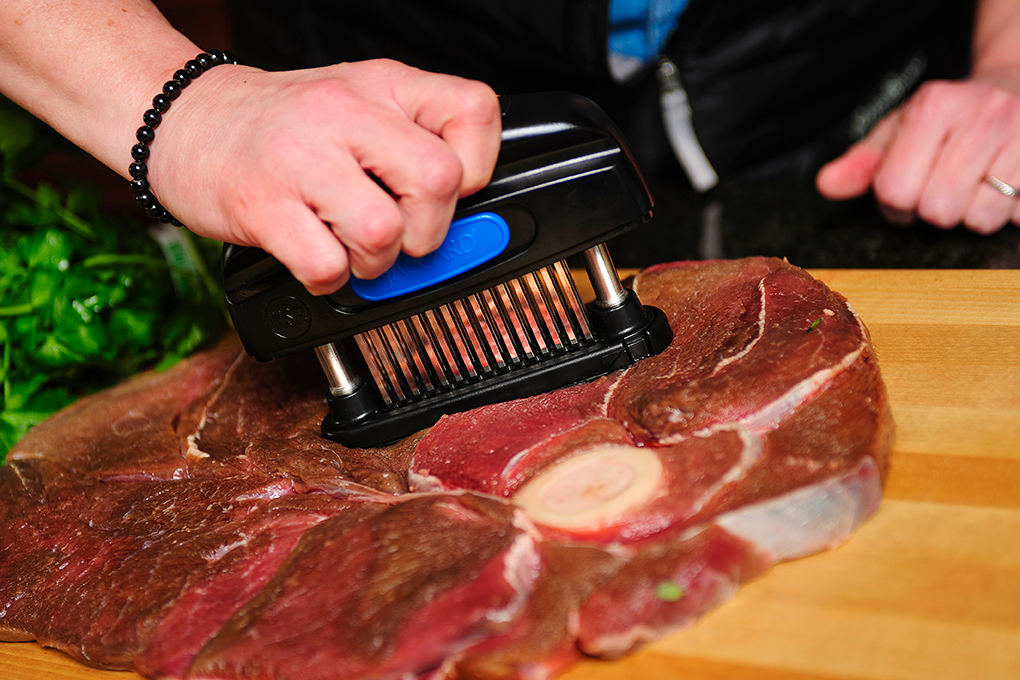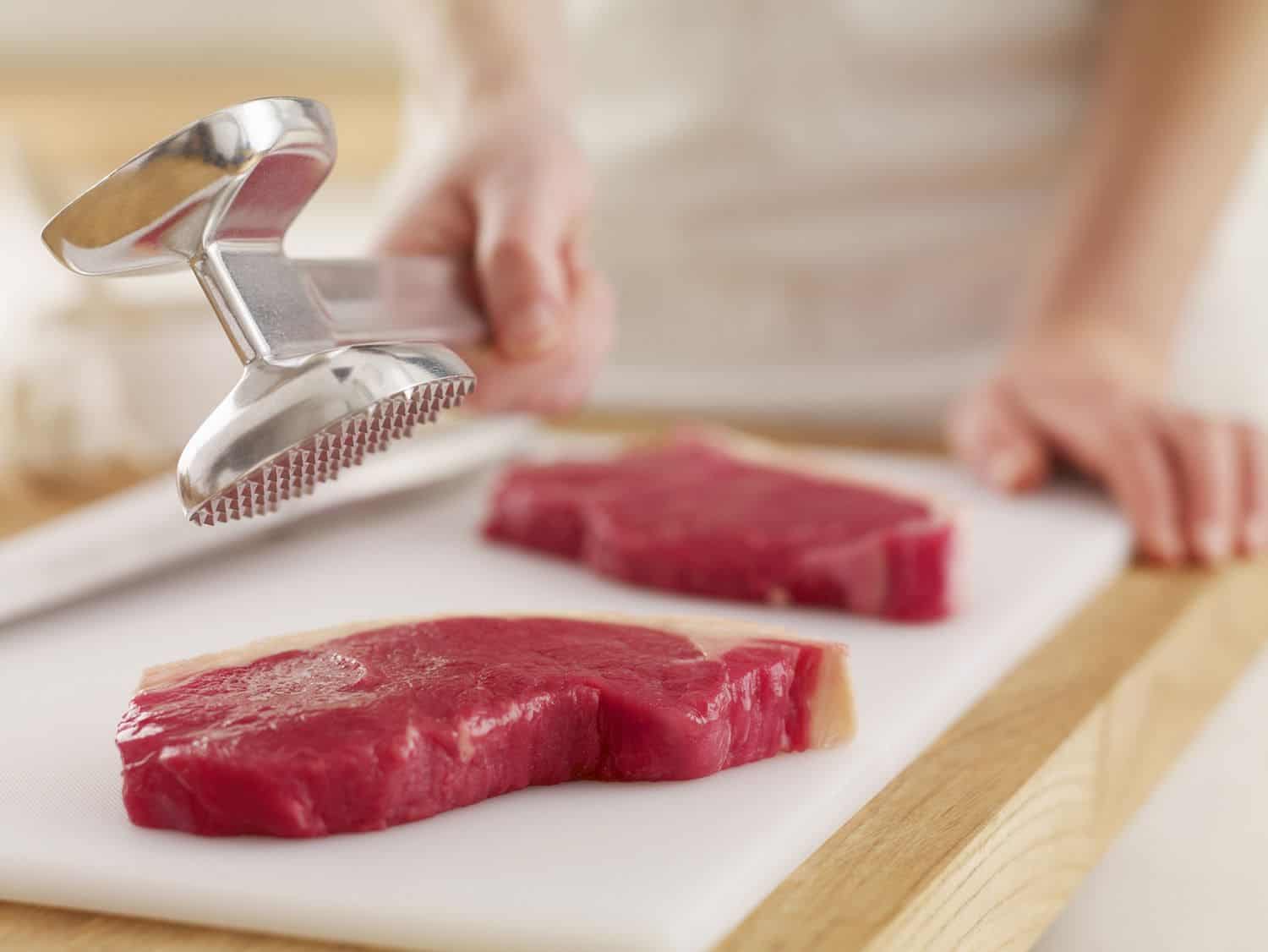How Does Meat Tenderizer Break Down Proteins Effectively
Written By James Morgan
For barbecue enthusiasts, understanding the science behind how a meat tenderizer works can revolutionize their grilling game. The primary question on everyones mind is, how does meat tenderizer break down proteins? In this comprehensive article, we will delve into the intricacies of meat tenderizers, explore the science behind them, and provide actionable tips for your next barbecue session.

The Science Behind Meat Tenderizers
Meat tenderizers are substances that break down proteins in meat, making it more palatable and easier to cook. The two main types of meat tenderizers are enzymatic and mechanical. Enzymatic tenderizers use natural enzymes derived from fruits like pineapples and papayas to dissolve connective tissue in meat. Bromelain from pineapple and papain from papaya are the most commonly used enzymes in these tenderizers.
Mechanical tenderizers, on the other hand, use physical force to break down muscle fibers. Tools such as meat mallets or tenderizing blades create small cuts in the meat, which helps to weaken the muscle fibers and connective tissues. However, in this article, our focus will primarily be on enzymatic tenderizers and their role in breaking down proteins.

Enzymatic Tenderizers and Protein Breakdown
The primary way enzymatic meat tenderizers work is by breaking down the peptide bonds within the proteins of the meat. Peptide bonds are the chemical bonds that hold amino acids together in a protein chain. When these bonds are broken, the protein molecules are fragmented into smaller peptides and individual amino acids, which are much easier to chew and digest.
When you apply a meat tenderizer containing bromelain or papain, these enzymes start to cleave the peptide bonds in the protein structure of the meat. This process not only makes the meat more tender but also enhances its overall flavor, as more surface area is exposed for seasoning and marinating.
The Role of Bromelain and Papain
Bromelain and papain work by targeting the collagen and elastin in the meat. Collagen is the protein responsible for the meat's toughness, while elastin provides its elastic properties. By breaking down these proteins, meat tenderizers significantly improve the texture of the meat.
For instance, bromelain is highly effective in breaking down collagen due to its proteolytic activity. Its often used in powdered meat tenderizers, which can be easily sprinkled over the meat before cooking. Similarly, papain also exhibits strong proteolytic properties and is widely used in culinary applications for tenderizing.

How to Properly Use Meat Tenderizers
Using meat tenderizers effectively requires understanding the correct application techniques. Here are a few tips to ensure you get the most out of your tenderizers:
- Choose the Right Tenderizer: Depending on the type of meat you are preparing, select the appropriate tenderizer. For tougher cuts like beef brisket or pork shoulder, enzymatic tenderizers are highly effective.
- Apply Evenly: Sprinkle the tenderizer evenly across the surface of the meat. Make sure to cover all areas to ensure uniform tenderization.
- Rest Time: Allow the meat to rest after applying the tenderizer. This resting period is crucial for the enzymes to break down the proteins effectively. Typically, a rest time of 30 minutes to an hour is sufficient.
- Cooking Method: The tenderized meat can be grilled, broiled, or pan-fried. Ensure the meat is cooked to the desired internal temperature for safety.

Common Myths About Meat Tenderizers
There are several myths surrounding meat tenderizers that need to be debunked:
- Myth 1: Tenderizers are harmful: Enzymatic tenderizers are derived from natural sources and are safe to use in cooking.
- Myth 2: They alter the flavor negatively: When used correctly, tenderizers enhance the flavor rather than detract from it.
- Myth 3: They work instantly: Tenderizers require some time to break down proteins effectively, so patience is key.
Tips for the Perfect Barbecue
Beyond using meat tenderizers, there are other techniques that barbecue enthusiasts should keep in mind for an unforgettable culinary experience. Marinades, for instance, can work in tandem with tenderizers to enhance flavor and tenderness.
Moreover, understanding the different cuts of meat and how they should be cooked can make a significant difference. For example, lean cuts like chicken breasts require different tenderizing techniques compared to more fibrous cuts like beef ribs.
Frequently Asked Questions
1. Do all meats require tenderizing?
Not necessarily. Tender cuts of meat like filet mignon or chicken breast generally do not require tenderizing. However, tougher cuts such as brisket or flank steak benefit greatly from the process.
2. Can I use too much tenderizer?
Yes, over-application of tenderizer can make the meat mushy. Its important to follow the recommended amounts on the packaging for best results.
3. Can enzymatic tenderizers be used on all types of meat?
Enzymatic tenderizers can be used on most types of meat, including beef, pork, and poultry. However, it's always good to perform a small patch test, especially with delicate meats like fish, to ensure the texture isn't compromised.
Learning More
Understanding how meat tenderizers work can make a world of difference for any barbecue enthusiast. By effectively breaking down proteins, these tenderizers ensure that your meat is tender, juicy, and packed with flavor. For further reading on meat tenderizing techniques and tips, check out the article on How a Meat Tenderizer Works.
As an Amazon Associate, I earn from qualifying purchases.



